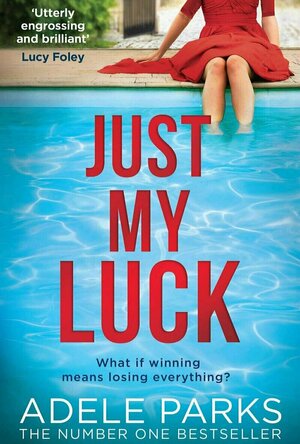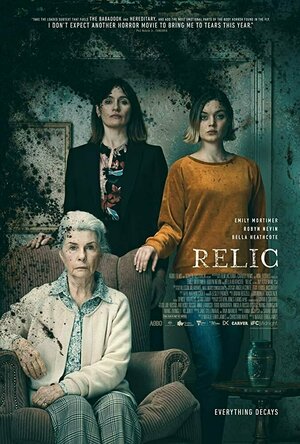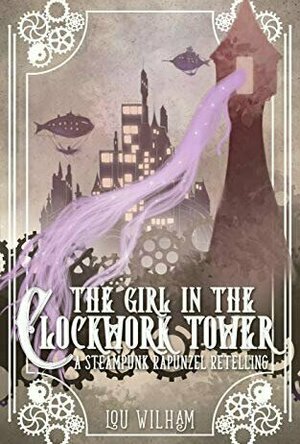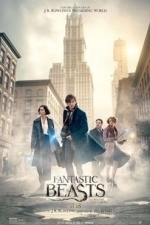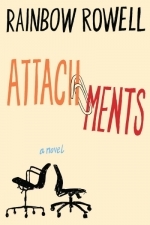
FirstMet Dating: Meet Singles
Dating, Lifestyle and Social Networking
App
MEETING REAL PEOPLE HAS NEVER BEEN EASIER! FirstMet Dating (formerly AYI) is packed with great...
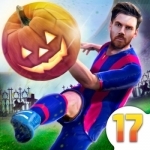
Soccer Star 2017 Top Leagues
Games and Entertainment
App
It’s the last match of the League and you are in a drawn. It’s your turn to choose the destiny...
Ivana A. | Diary of Difference (1171 KP) rated Just My Luck in Books
Aug 3, 2020
<a href="https://diaryofdifference.com/">Blog</a>; | <a href="https://www.facebook.com/diaryofdifference/">Facebook</a>; | <a href="https://twitter.com/DiaryDifference">Twitter</a>; | <a href="https://www.instagram.com/diaryofdifference/">Instagram</a>; | <a href="https://www.pinterest.co.uk/diaryofdifference/pins/">Pinterest</a>;
<img src="https://i1.wp.com/diaryofdifference.com/wp-content/uploads/2020/05/Book-Review-Banner-47.png?resize=768%2C432&ssl=1"/>;
<b><i>What would you do if you win the lottery?</i></b>
What happens when a person suddenly has a chance to be rich? Just My Luck by Adele Parks is a brutal book about bad luck, betrayals, friendships and most importantly – how life can change in just one moment.
For fifteen years, Lexi and Jake have played the same six numbers with their friends. Over dinners, they have discussed many important things over the years: kids, marriages, houses and jobs… But one Saturday night, there is an argument in the group. Someone is lying. And then, six numbers come up on the lottery that are about to change everything.
Lexi and Jake have the winning ticket for almost £18 million. And their friends want their share in it…
<b><i>My Thoughts:</i></b>
I dived into this book completely unprepared. I only knew that someone wins the lottery, but I wasn’t too familiar with the synopsis. And trust me – it was better for me to explore it all throughout the book.
We follow the story mostly focused on Lexi’s point of view, however, we also get a glimpse of other people’s stories as well, which I think for me was refreshing and kept the pace moving in a nice manner.
Not only do we meet different characters in this book, but we also meet different personalities, with different motivations, dreams and life goals. When Lexi and Jake realised they have won the lottery, they both behave in a very different way.
Lexi is the one that wants to keep things as normal as they are, plan for their future, have small luxuries and then keep the rest of the money mostly as savings, and donate some of it to charity and try to help other people.
Jake, on the other side, wants to enjoy the money they won, and spend it on a new house, new car, be part of the upper class and hire driver services for his children, when they move to a private school.
The relationship between Lexi and Jake will begin to change, as they both will change during this period. This book is a perfect summary of what money may actually do to people and relationships, and how it may help them or destroy them completely.
I loved the drama where the friends were involved as well, also when the children played their part as well into the whole situation. It is crazy to see how easily children can be manipulated by words and wealth too, in their own little worlds.
I really wished I have seen more of Toma’s story and point of view, and had a proper closure to his chapter. His story was definitely my favorite one for sure!
<b><i>If you are a fan of thrillers and drama, you will definitely enjoy this book. It will keep you on the edge until the very last chapter. And that last chapter will change everything! Let me know once you’ve read it, because I am dying to talk to someone about that last revelation!</i></b>
I am extremely lucky to be part of the blog tour organised by the amazing team at HQ! Thank you for this opportunity, and thank you for sending me this book in exchange for my review! Check out the other amazing participants of this blog tour as well:
<img src="https://i1.wp.com/diaryofdifference.com/wp-content/uploads/2020/05/JUST-MY-LUCK-BTB.jpg?resize=594%2C1536&ssl=1"/>;
<a href="https://amzn.to/2Wi7amb">Wishlist</a>; | <a
<a href="https://diaryofdifference.com/">Blog</a>; | <a href="https://www.facebook.com/diaryofdifference/">Facebook</a>; | <a href="https://twitter.com/DiaryDifference">Twitter</a>; | <a href="https://www.instagram.com/diaryofdifference/">Instagram</a>; | <a href="https://www.pinterest.co.uk/diaryofdifference/pins/">Pinterest</a>;
Lee (2222 KP) rated Relic (2020) in Movies
Sep 2, 2020
When Kay (Emily Mortimer) receives word that her elderly mother, Edna (Robyn Nevin) has gone missing, she and daughter Sam (Bella Heathcote) drive out to her rural home to investigate. We’d already been introduced to Edna briefly in the opening scene, where she stood naked with her back to us, in a sequence which had already managed to introduce an overwhelming sense of dread and unease. Something that Relic continues to build upon for much of its 89 minute runtime.
Kay and Sam spend some time in the house, liaising with the police and looking for clues to Edna’s whereabouts while they rummage through her large house. Post-it note reminders are dotted around the house, indicating that Edna is now struggling with dementia. From the simple, helpful kind of reminder, such as “take pills” and “turn off the tap”, to the slightly more sinister “don’t follow it”. There are lots of strange, unexplained noises in the house too, with a black mould growing on some of the walls. All the while, a pulsing, pounding score in the background continues to effectively layer up on that dread and unease I mentioned before. While browsing through some paperwork, Kay finds an old sketch of a cabin in the woods and casually mentions to Sam that it was where her great grandfather died alone, of dementia. Apparently the windows, and other elements of the cabin, were used in the building of the house that they are now in, and despite the fact that Kay is currently suffering from dark and disturbing nightmares involving the cabin and her great grandfather, none of this seems to trigger any alarm bells whatsoever!
When Edna suddenly returns home one morning, with no memory of where she’s been, she has dirt under her fingernails and a large and nasty bruise on her chest, which over time begins to look suspiciously like that black mould that’s forming on the walls. While Sam wants to stay and be near to her grandmother, Kay is more focused in checking out care homes to ship her off to. Edna swings between being perfectly normal, with a sharp memory, to periods of forgetfulness and rage. Some time taken to follow the family interactions over the next few days really helps to deepen the characters’ relationships in our minds, highlighting existing tensions between them. And restricting pretty much all of the movie to the confines of the mysterious house only serves to ramp up the unease, in preparation for the final act.
The description of Relic on IMDb states “a manifestation of dementia consumes the family home”, and you can probably gather as much anyway, just by watching the trailer. Instead of the traditional haunted-house movie that you might expect from the earlier part of the movie, we’re treated to an allegory for the horrors of dementia. The house becomes the star of the movie, seemingly altering itself to induce claustrophobia, confusion and panic in Sam and Kay as they become trapped in its shifting corridors, lowered ceilings and newly sealed doors.
Relic can at times feel a little too metaphor driven, and while I understood the beauty and the meaning behind it’s closing moments, I felt it threw up a lot more questions than it answered. Depending on how much that bothers you may affect your overall enjoyment, but I still found it to be an impressively original movie, which successfully managed to creep me out!

Travelr - Sugar Daddy Travel
Travel and Social Networking
App
Welcome to Travelr - One of the best Tinder way sugar daddy travel dating app for singles which gave...
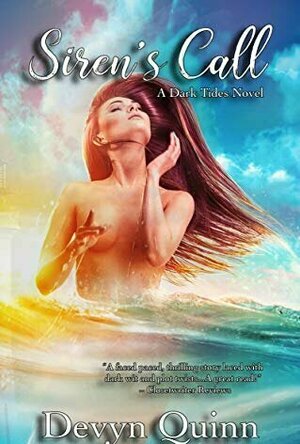
Siren's Call (Dark Tides #1)
Book
Between desire and love there are some things that can’t stay buried, even in the deep of the...
Lottie disney bookworm (1056 KP) rated The Girl In The Clockwork Tower in Books
Aug 30, 2021
Dashing captain of an airship? Check.
Magic? Check.
Weird obsession with pineapples? Check!
The Girl in the Clockwork Tower is a steampunk Rapunzel-inspired tale full of adventure and magic and great, well-developed characters.
Persinette was brought to MOTHER headquarters at the age of 8 and has since been used as a seer, tracking the ‘Enchanted’ so that they can be captured by MOTHER’s agents and placed in concentration camps. 16 years later, Persinette, or Persi, doesn’t take the entrapment of her own kind lightly but is under constant threat from her controlling agent Gothel who makes it clear that once Persi is no longer useful to MOTHER, she will be disposed of.
Luckily for Persi, the Enchanted are not completely defenceless and the ‘Uprising’ have also noticed her talents. Captain Manu Kelii is tasked with recruiting Persi to their cause but can the charming airship captain protect the Seer from the formidable MOTHER?
Lou Wilham’s characters are so well developed you will feel as if you have known them forever. Persinette begins her adventure as a timid, downtrodden, lavender haired girl: used as an asset for as long as she can remember. However, by the closing pages, Persi is a survivor, wielding her new-found magic and is unwilling to be an “asset” for anyone but herself.
Despite Persi’s evolution from broken to badass, Captain Manu Kelii steals the show. Manu is a puppy dog, so eager to please and very confident in himself. When he finally receives a mission from the leader of the Uprising he is like a kid at Christmas and his bizarre obsession with pineapple provides both humour and an almost arrogant air about him. However, Manu’s clear adoration and care for Persi really cause him to grow as a character: this is potentially the first time Manu has worried for someone other than himself.
I would have liked a little more backstory from Manu, we know how he came to be on the ‘Duchess’ and we know him now but what happened in the meantime? It would be nice to have a little more insight into our pirate captain’s previous adventures.
Some reviewers have said this book is not a true Rapunzel retelling and I can see what they mean to a certain extent. I can certainly appreciate that the towns of Pascal and Maximus, the organisation Mother and agent Gothel do feel quite forced. However, Persinette was the “maiden in the tower” of literature before Grimm’s Rapunzel grew her first curl and when you think that Wilham’s Persi is imprisoned in a tower, desperate to explore the outside world but, most importantly, to discover who she truly is, you start to realise that the stories aren’t a million miles apart after all.
That being said, the cute Disney-esque details weren’t really needed, they certainly weren’t what made this story great: The Girl in the Clockwork Tower would have easily stood its own ground without any affinity to Rapunzel being made.
It shouldn’t need adding but sadly the lack of diversity in other novels means that readers find it refreshing and reassuring when LGBTQIA characters are included and Lou Wilham does not disappoint. Eddi, the leader of the uprising uses gender neutral pronouns and Benard and Owen are the cutest “gay dads” to Manu.
I really appreciated how these characters’ genders or sexuality were not under a spotlight: pronouns were used and relationships were explained, just as they were with Manu and Persi and that is just how it should be.
The Girl in the Clockwork tower is a gritty fairytale; complete with love, magic, villains, airships, concentration camps and a fair amount of alcohol on Manu’s part! Persi’s adventure sees her discovering her strength, her magic and maybe even finding love: this is one damsel who doesn’t need a man to save the day!
Thank you to Booksirens. I received an advance review copy for free, and I am leaving this review voluntarily.
Bob Mann (459 KP) rated Fantastic Beasts and Where to Find Them (2016) in Movies
Sep 29, 2021
Set in New York in the mid-1920’s Eddie Redmayne (“The Danish Girl”; “The Theory of Everything”) plays Newt Scamander, a Brit newly arrived with a case full of trouble. Newt is a bit like an amiable and ditsy David Attenborough, with a strong desire to protect and establish breeding colonies for endangered species. It’s fair to say though that these are creatures that even Sir David hasn’t yet filmed.
Within the battered old case (a forerunner of Hermione Grainger’s bag, which was probably borrowed from Mary Poppins), Newt stores a menagerie of strange and wonderful creatures which – after a bump and a mishap – get released by wannabe baker and muggle Jacob Kowalski (Dan Fogler, “Fanboys”). Newt has the job of rounding up the strays with the help of Tina (Katherine Waterston, “Steve Jobs”), an out of favour member of the Magical Congress of the USA (MACUSA). Unfortunately this couldn’t be happening at a worse time: something else – nothing to do with Newt – is wreaking havoc across New York and MACUSA is on red alert suspecting the involvement of a dark wizard, Gellert Grindelwald, following attacks in Europe. And keeping the secrets of wizardry from the NoMaj population is getting increasingly difficult, especially with the efforts of the “Second Salemers” movement run by Mary Lou (Samantha Morton, “Minority Report”) and her strange adopted family.
This film will obviously be an enormous success given the love of all things Potter, but is it any good? Well, its different for sure, being set many years before Potter and only having glancing references to Hogwarts and related matters. And that gives the opportunity to start afresh with new characters and new relationships which is refreshing. It’s all perfectly amiable, with Redmayne’s slightly embarrassed lack of eye-contact* in delivering his lines being charming. [* Is this perhaps the second leading character in a month that is high on the autistic spectrum?] . Redmayne does have a tendency to mutter though and (particularly with the sound system for the cinema I saw this in) this made a lot of his dialogue inaudible. Waterston makes for a charming if somewhat insipid heroine, not being given an awful lot to do in the action sequences.
Kowalski adds a humorous balance to the mixture, but the star comic turns are some of the creatures, especially the Niffler… a light fingered magpie-like creature with a voluminous pouch and expensive tastes!
In the ‘I-almost-know-who-that-is-behind-the-make-up-but-can’t-quite-place-him’ role is Ron “Hellboy” Perlman as the untrustworthy gangster Gnarlack. And in another cameo – and probably paid an enormous fee for his 30 seconds of screen time – is Johnny Depp, which was money well-wasted since, like most of his roles, he was completely unrecognisable (I only knew it was him from checking imdb afterwards).
At the pen is J.K.Rowling herself, and there are a few corking lines in the script. However, in common with many of her novels, there is also a tendency for extrapolation and padding. Some judicial editing could have knocked at least twenty minutes off its child-unfriendly 133 minute running time and made a better film. Undoubtedly the first half of the film is better than the second, with the finale slouching into – as my other half put it – “superhero” territory with much CGI destruction and smashing of glass. What is perhaps most surprising about the story is that there are few obvious set-ups for the next film.
Quirky and original, its a film that will no-doubt please Potter fans and it stands as a decent fantasy film in its own right. It’s difficult though to get the smell of big business and exploitation out of your nostrils: no doubt stockings throughout the world will be full of plush toy nifflers this Christmas.
BankofMarquis (1832 KP) rated Eternals (2021) in Movies
Nov 10, 2021
In ETERNALS, Marvel has really attempted to open up their “Universe” by introducing their audience to the Eternals, celestial beings that are tangentially interested in the goings-on of the human world.
It’s not a Super-Hero movie, per se, it’s a world of “Gods and Monsters” (to steal a phrase) that has repercussions across the Universe.
So with this background in mind, the ETERNALS succeeds, mostly, because it is trying to be something…else. NOT a SUPERHERO film, but something on a different plane.
Unfortunately, this probably will put off “Fan-boys” who want “more of the same” (more Avengers, more Thanos, more F/X smashy-smashy, fight-fight) and ETERNALS just isn’t intended to be that.
Your first clue that this film is trying to be something else is the choice of Director - recent Oscar Winner Chloe Zhao (NOMADLAND), known for her personal stories and interesting visuals. She brings that sensibility to this film and it (mostly), though it is the type of Cinematic style that works best in low-res (like an independent film like Nomadland) rather than large IMAX Comic-book film event films.
The movie itself is entertaining…enough. It is, necessarily, slow at the beginning as Zhao needs to set up these characters and the realm that they are playing on (and orient the audience as to how this fits with the AVENGERS:ENDGAME of it all). There are 10 (yes, TEN) Eternals to introduce along with ancillary characters, so the film has to take some time to gather steam.
And…it gathers steam, not in the action sequences (which are serviceable) but in the characters and the character interactions and this is where the film really works for me.
Gemma Chan (CRAZY, RICH ASIANS) and Richard Madden (Rob Stark on GAME OF THRONES) are, basically, the lead characters as their relationship takes center stage for most of the film - and these 2 (especially Chan) holds the screen well, which is tough to do since there are so many characters - and so much other things going on.
The real hero of the Marvel Cinematic Universe, IMHO, is the Casting Director who, time-after-time, plucks relative unknowns and throws them into parts that they are perfectly cast for…Salma Hayak (leader of Eternals, Ajak), Lia McHugh (Sprite), Brian Tyree Henry (Phastos), Lauren Ridloff (Makkari) and Barry Keoghan (Druig) all fit their parts well, with the relationship between Makkari and Druig being particularly interesting.
Speaking of interesting relationships, Ma Dong-seok (so good in the Korean Zombie flick TRAIN TO BUSAN) as Gilgamesh almost steals the screen from MOVIE STAR Angelina Jolie’s Thena…almost. Jolie is a MOVIE STAR that just walks onto the screen and commands your attention - and she is perfectly cast as Thena. It is a very smart use of her talents…and her personae as a MOVIE STAR and works very well.
Finally, it took awhile for the film to figure out what to do with Kumail Nanjiani’s character of Kingo (and Nanjiani’s tremendous comedic talents), but, eventually, they do figure it out - but not entirely - which is really the problem with this film. It ALMOST figures out the formula to make this huge, broad, galactic film very personal, but doesn’t quite get there.
I liked, but didn’t LOVE, ETERNALS. I applaud what this film tries to do and I am fine with where it went and was entertained by it. If this is the first part of a journey, then I am anxious to see where ETERNALS goes from here. If this is a “one-off” film, then it doesn’t, quite, work well enough.
Letter Grade: B
7 stars (out of 10) and you can take that to the Bank(ofMarquis)
Kaysee Hood (83 KP) rated Attachments in Books
Nov 16, 2017
1. This is Rainbow Rowell's first published novel, so of course for some it doesn't hold the magic like Eleanor & Park. Keep in mind many first books never hold against later published works, but are still good or why would the author be allowed to continue?
2. Even though it was published in 2011, it is based in 1999/2000 for plot reasons as to why Lincoln would have his job. This may offset some readers who might not realize how different 1999 is to 2017 Internet use wise for jobs.
3. The lack of reading into who and why the characters are as they are. In a way, it is the adult version of Fangirl, expect the roles are flipped a tad bit.
Anyway, I loved Attachments because it stayed true to Rowell's style, yet it felt raw compared to how she writes now. There is the unconventional love story of a man falling in love with a woman through the e-mails he reads as part of his job to ensure people are working and not nonsense while on the job. There's characters of all sorts with real world problems and real life flaws. There are topics covered of overbearing mothers and mothers who are too cruel both because of their own life. There is men who never want to be tied down, yet one does due to advice and the right woman. The book covers pieces life without taking from the plot whatsoever.
Lincoln O'Neil is a 28-year-old who could have been a successful man with a normal day shift job if a break up had not left him shattered nine years before. Maybe also if his mother had not coddled him, even though she clearly meant well as it is clear him and his sister, Eve, might have been her whole life. Yet we would not have the awkward, shy man working a the swing shift in the IT office as a "security officer" fixing computers in his spare time when he isn't reading through e-mails that come up flagged in the Webfence program. Apparently the security part was ensuring no one at the newspaper office was using the Internet to look at porn, gamble, or idle chit chat instead of working. Not quite was Lincoln had pictured and he doesn't enjoy reading people's exchanges, but the money is good and will grant him the chance to move out his mom's sooner rather than later.
His mundane routine and nothingness during his shift is filled with some enjoyment as Lincoln reads the e-mails flagged from Beth Fremont and Jennifer Scribner-Snyder. There is nothing harmful. Innocent discussions of water cooler talk, life, relationships, and gossip. As much as he knows it is wrong to continue to read their messages about their lives without flagging them as he would anyone else Lincoln cannot help but to get a kick out of the e-mails.
However it soon becomes apparent Lincoln has fallen for Beth despite the fact he has no idea what she looks like or who is she outside of work. Not to mention she has a boyfriend, Chris, who even though she may rant about to Jennifer, she obviously has not intent on breaking ties with. Not for someone like Lincoln anyway. So he spends his time in turmoil trying to decide if a new job is in order, going back to college, or finding a woman to focus his attention on (which are the very things he tries to do). He even tries to ignore the e-mails, yet can't. He cannot help, but feel for Jennifer's worry over having a baby even though her husband wants one. He cannot help, but captivated by their friendship. He cannot help his feelings for Beth for who she is.
It doesn't help Beth has spotted him labeling him as "A Cute Guy" when he never realized she was around. It is like a game of cat and mouse between them then. Beth still unaware he is reading her e-mails. Lincoln unaware of how often she is close to him even when she is going out of her way to find him.
Thus a budding romance is born. But how much of a romance can it be when Beth has Chris and Lincoln can barely look a woman in the eyes?
